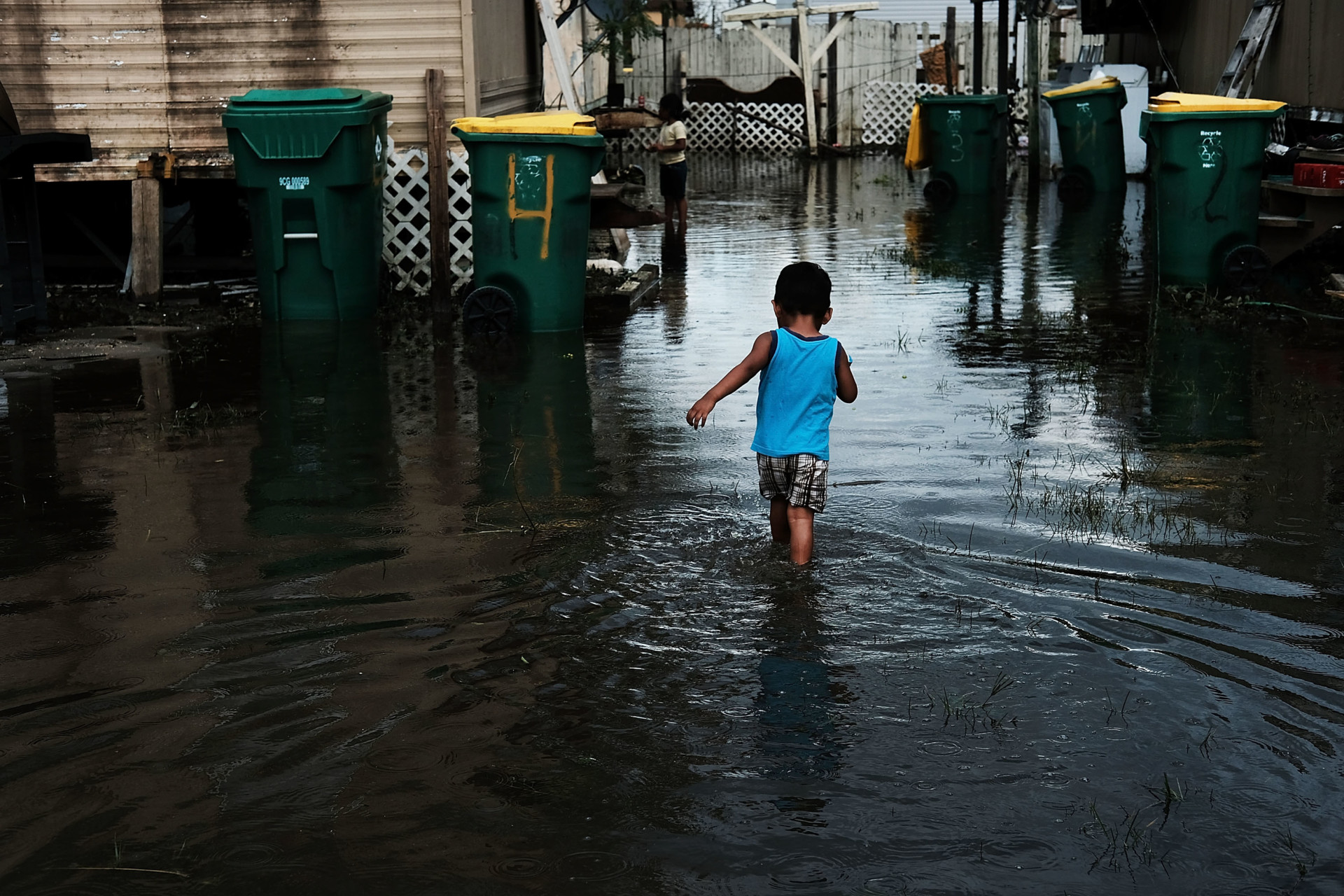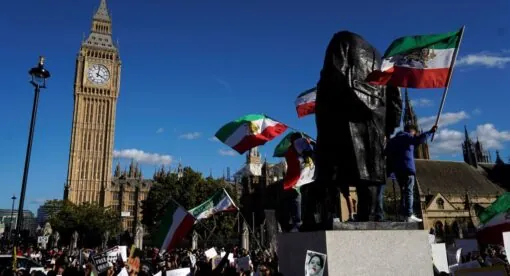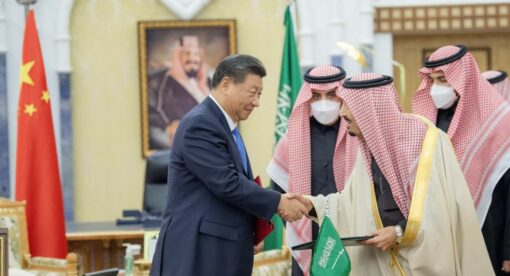The United States can accelerate international efforts to counter the increasing numbers of people being displaced by climate change. Otherwise, the size of the vulnerable population will only increase – leading to human calamity.
Climate-induced displacement is becoming more commonplace and closer to home, and the development of adequate national or international governance to protect and/or assist this movement has been slow and unsuccessful. Since none of the G-20 states have implemented a plan to meet the goals of the Paris Accord, climate displacement will continue to proliferate across the globe as temperatures rise. U.S. leadership to facilitate global cooperation on this issue is critical for a successful governance mechanism.
Concerns over climate-induced migration are not new. While leaders of small, developing island states have been advocating for improved assistance with the impacts of climate-related loss since 1991, it wasn’t until Hurricane Katrina that the U.S. took an interest in connecting climate change with displacement events.
However, the issue of climate displacement remained a foreign one. The press has sensationalized the issue with stories of eventual doom for “climate refugees.” Nowhere has this been more apparent than in the way that small islands are depicted. Media narratives such as the “canary in the coal mine,” “lost city of Atlantis,” and “sinking islands,” provide intrigue and anxiety surrounding their inevitable disappearance. They also posit islanders as victims whose only option is migration. The prevailing imagery of “climate refugees” reinforces this interpretation. Articles tend to portray foreigners in fragile and undeveloped lands being swallowed by water or living in devastation.
The term “climate refugee” is itself easily derived from these pictures. Solely a descriptive term, it does not implicate the global refugee regime or any governing body – though those who use it want to see it being given a legal meaning. A legal refugee is someone who has crossed an international border and “who is unable or unwilling to return to their country of origin owing to a well-founded fear of being persecuted for reasons of race, religion, nationality, membership of a particular social group, or political opinion.” In contrast, most climate “refugees” are internally displaced: Katrina displaces were relocated to other U.S. cities; those displaced by the California wildfires of 2018 did not move to Canada. The same can be said for those displaced by Hurricane Ida.
International Inaction
Developing adequate governance to address the protection gaps for climate migrants and displacees has been a short and bumpy road to nowhere. Over the past decade, there has been much talk in the international arena about how to assist those who will be displaced by climatic processes. In that time, extreme events have increased, but ambition toward an international protocol to protect and facilitate movement has fizzled. The U.N. High Commissioner for Refugees (UNHCR) has refused to expand its mandate to accept climate refugees, arguing that such an expansion would water down protections for victims of persecution and overextend its obligations. UNHCR assisted over 20 million refugees in 2020, and yet twice that number were internally displaced and not eligible for protection under its current mandate. Instead, it is focusing on helping with minimizing cross-border displacement, providing legal advice, policy reconciliation across arenas, and research.
Since 2010, the U.N. Framework Convention on Climate Change has seen fits and starts related to furthering any directives toward facilitating movement through organized governance in response to climate impacts. That year was the first time that climate change displacement was included in a Conference of the Parties decision. The development of the Warsaw Mechanism for Loss and Damage in 2013 provided a space for displacement (as a function of loss beyond what mitigation and adaptation could prevent). However, in the negotiation over its institutionalization, parties chose not to establish a discrete mechanism to facilitate relocation provisions. An option to establish a climate change displacement coordination facility was ultimately unsuccessful at the Paris meeting. Consensus only became possible after the facility and its option to compensate the displaced were stripped.
National and other legislative alternatives have had mixed success. While Bolivia has extended refugee protections to those crossing its borders due to climate change, the measures taken by the European and Australian Parliaments to extend protectionary status to climate displacement have fallen short. The European Resolution approved in October 2019 is an acknowledgement of the issue with a call for action to be taken. The Australian bill faced criticism in the Senate over whether Australia was already doing its fair share to combat climate impacts, the impact of Australia taking unilateral action, and the financial implications. The bill never proceeded to a vote.
The U.S., one of the largest historical emitters of greenhouse gases and an intermittent international roadblock, now has the chance to make up for lost time with its own legislation. Nevertheless, the bill faces a battle in the Senate over increasing immigration quotas in a time of domestic uncertainty.
To date, no claim has been lodged for climate refugee status in which the asylum seeker argues their nation of citizenship has directly caused the environmental damage that led to their cross- boundary flight, which, per the internationally accepted definition, could amount to persecution. For now, those whose lives and livelihoods have been upended by climate impacts have no tailored protections, rights, or recourse.
Ineffective Protections
Climate migrants currently move through traditional networks, obstructing the channels for refugees and blending with other irregular and economic migrants. This leads to ineffective migration processing because there exists no legal mandate to protect or process them efficaciously. Rising levels of unmanaged migration and displacement will contribute to increasingly dangerous irregular migration routes, the further exploitation of the vulnerable through trafficking, and an overload of border protection systems. Their flight and entry are not protected by any governance mechanism. Those who have lost homes, land, or their jobs can easily be detained or returned to a disaster zone or deteriorating wastelands. The developed world is no less fragile or susceptible to climate impacts but can temporarily afford the social safety nets and restoration the developing world cannot.
It is very unlikely that climate migration will decrease. The Intergovernmental Panel on Climate Change projects that the “Global surface temperature will continue to increase until at least the mid-century under all emissions scenarios considered … warming of 1.5°C and 2°C will be exceeded during the 21st century unless deep reductions in CO2 and other greenhouse gas emissions occur in the coming decades.” Even though the Paris Agreement required all parties to work toward ambitious nationally determined contributions, the gap between these pledges and what is Paris compatible is significant. If this is not addressed, more climate displacees will fall through the governance gaps. The consequence of inaction will be overwhelmed border crossings and entry denials with nowhere to return, fueling desperation, hopelessness, panic, and wide-scale catastrophe, all of which will morph into political crises for ruling elites.
Recommendations
What is necessary to fill the climate migration/displacement governance gap is an internationally sanctioned mechanism for protection and the facilitation of movement due to climate impacts. Such a mechanism would be able to provide universalized procedures and build local capacity. Needing broad-based support, a funding apparatus, and global compliance, such a mechanism must be proposed and backed by a nation that can wield considerable soft power. The U.S. should propose an updated iteration for an international facility for climate displacement and processing (the IFCDP) at the 2021 United Nations Climate Change Conference, also known as COP26. The facility should act as a coordination center, triaging displacement through in-country offices to process claims and distribute aid as needed. Local offices would assist with travel planning and organization, provide support for transit, if necessary, facilitate job skills training if movement is permanent, match migrants and displacees with locations of cultural similarity, and coordinate with national immigration and border for quota alignment (if established).
In doing so, the U.S. could shape the international system with or without the passage of its own legislation on the matter. Regardless of a divided Congress, such a move would reinforce the prevailing national opinion on climate action and growing public acknowledgement that climate migrants are distinct and are viewed more favorably than economic migrants. Pushing for national legislation in tandem would signal a credible commitment to the international community through leading by example.
However, initiating an international mechanism to facilitate movement and protect the rights of climate displacees is not feasible unless the U.S. is behind it. Each time the “global south” brings up the need for action in this issue area, agreements fall short. U.S. backing would also minimize the trepidation developed nations have over committing to “compensation” for displacees; replacing the term with “aid” could eliminate fears over liability.
With summers increasing in length and driving the need for a global shift in where crops can be grown and changing zones of habitability, something must be done to prevent even bigger catastrophes than we already seen, such as caravans of Central American migrants and overcrowded vessels sinking in the Mediterranean. The U.S. has never shied away from doing difficult things; its political leaders have stepped up in tough times to push for international cooperation on human rights and the establishment of protections for the persecuted. Proposing the IFCDP to protect and facilitate the movement of climate displacees is not only the right thing to do in accordance with liberal democratic values but also would benefit the world for decades to come.
Dr. Andrea C. Simonelli is an Assistant Professor of Human Security at Virginia Commonwealth University and Founder of Adaptation Strategies International (ASI). Dr. Simonelli holds a Ph.D. in political science from Louisiana State University and is a former attendee of the United Nations University Environment and Human Security Programme Summer Academy and Oxford’s Refugee Studies Centre Summer School in Forced Migration. Her research investigates the governance implications of climate-induced migration as well as the relationship between governance, adaptation, and human security on Small Island developing states in the Indian Ocean and the greater Pacific basin.
The views expressed in this article are those of the author and not an official policy or position of the Newlines Institute.







